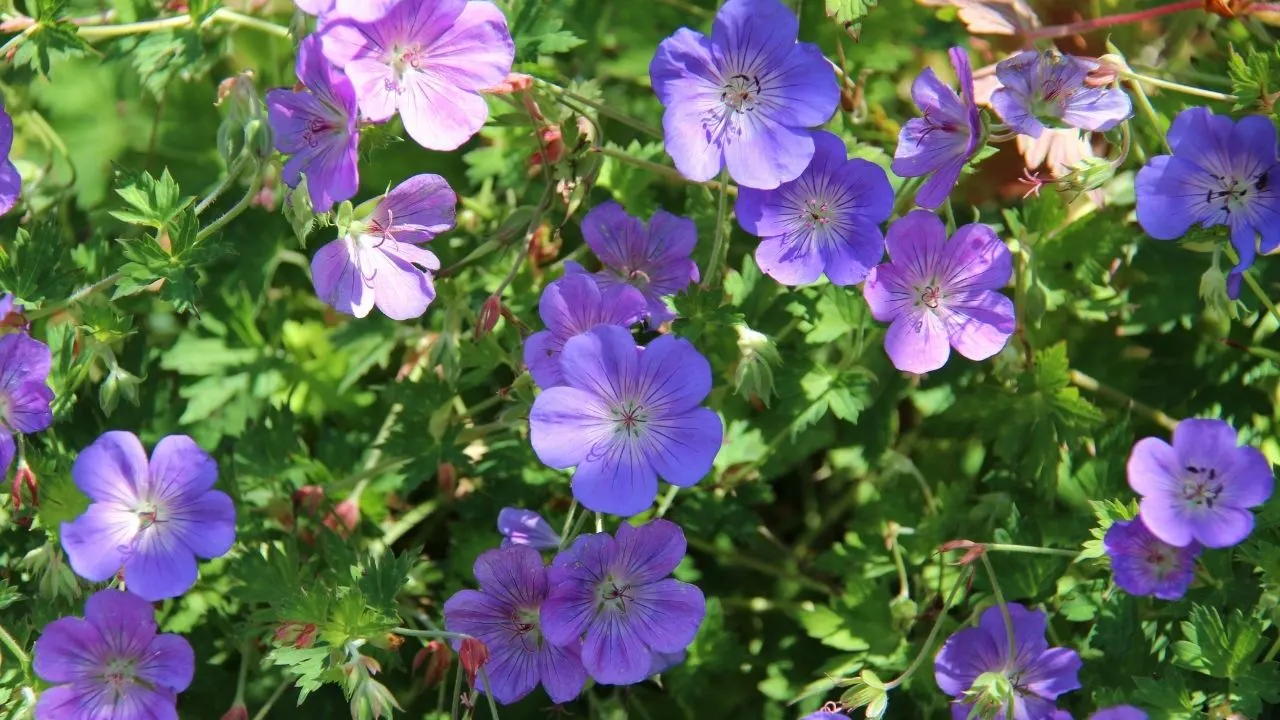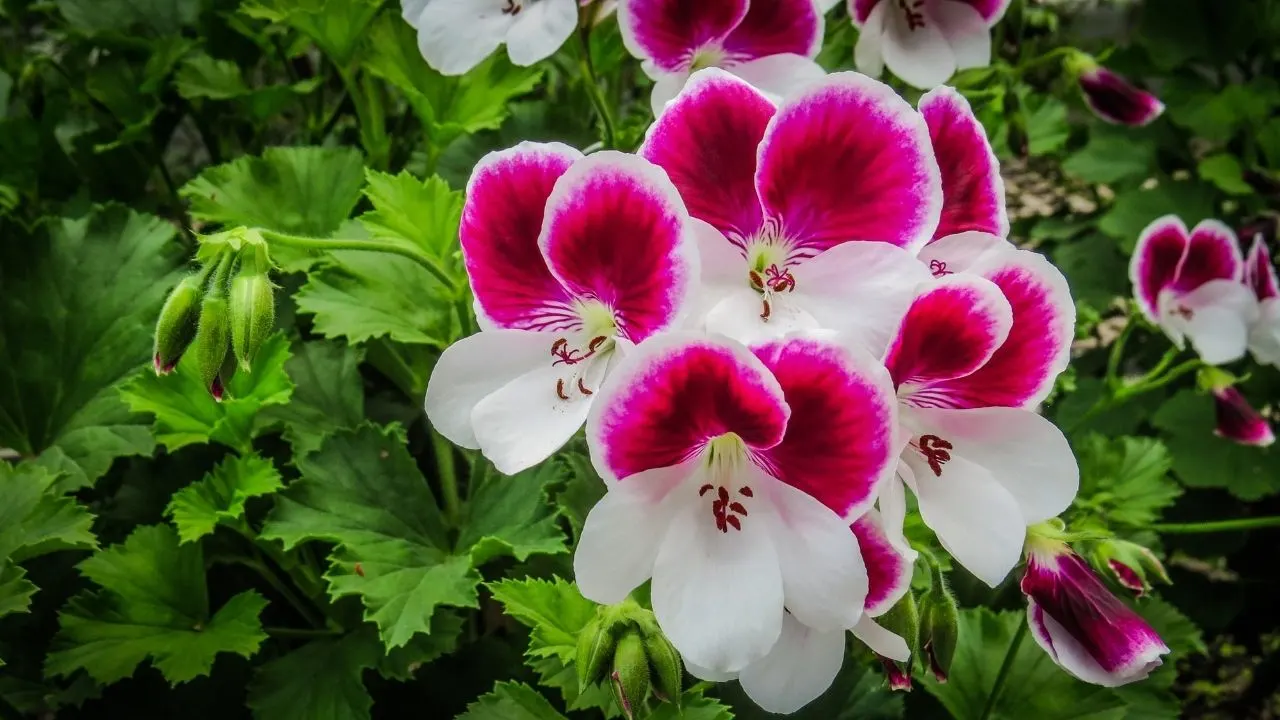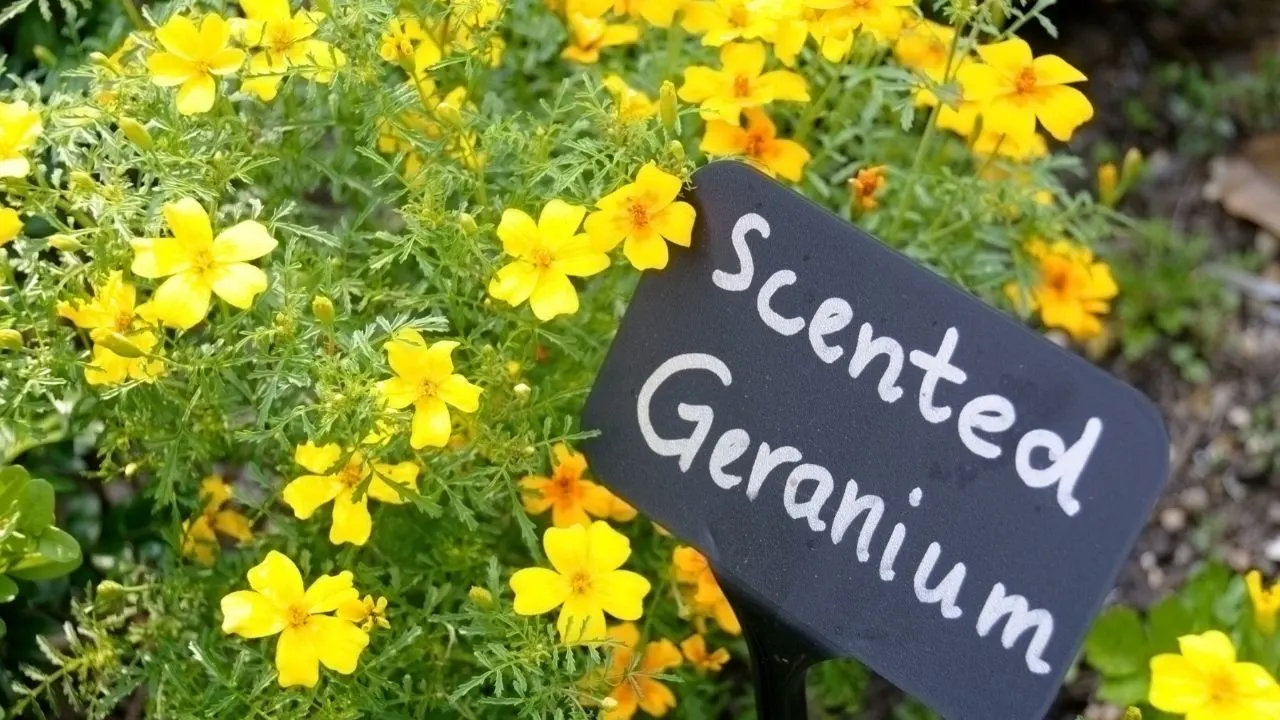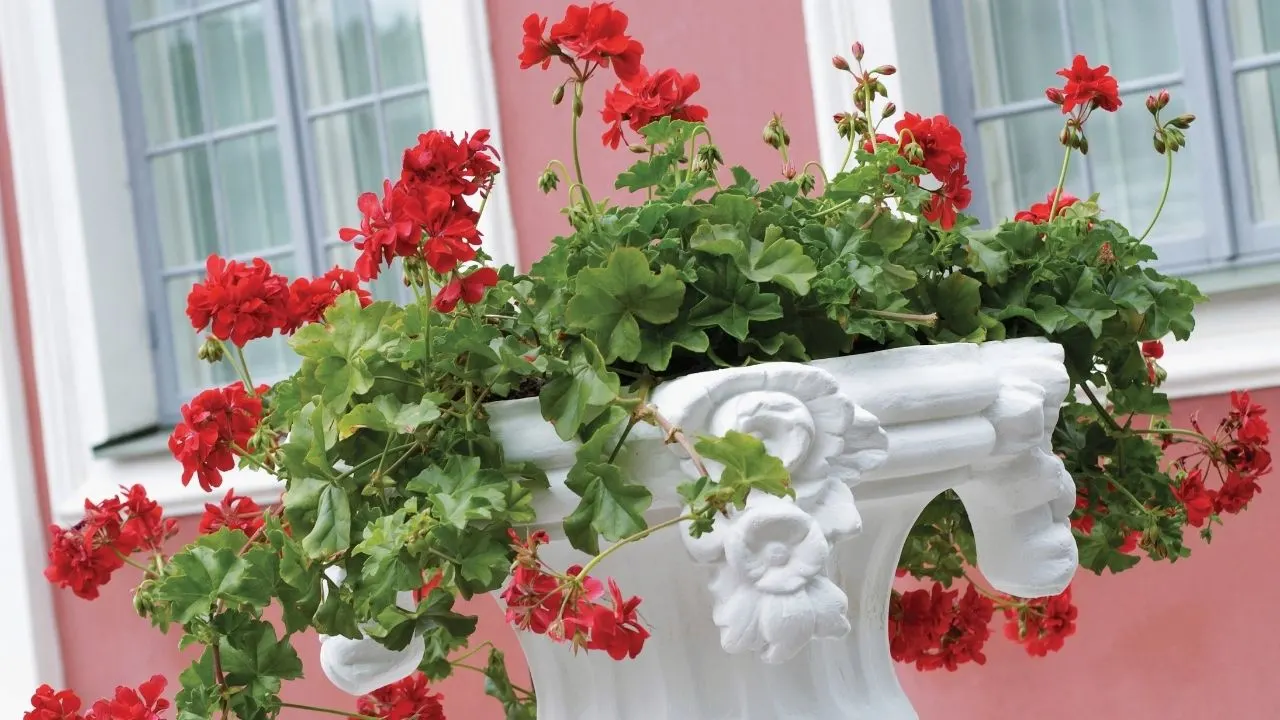When you want a plant to put on a dazzling show of floral colors in your garden, window boxes, hanging baskets, or even grow bright blooms on a trellis, growing geraniums is the way to go.
Problem is, there are so many different types.
Only one of them’s a true geranium though and that’s the hardy Cranesbill.
All the others are technically pelargoniums and get treated as annuals. They only survive as perennials in zones 10 and 11.
You can prune geraniums back to overwinter indoors though.
The colors of geranium varieties are similar, albeit some brighter than others. The flowers, overall, possess five petals, and the leaves are five-lobed, too, just in different sizes.
How they grow differs by variety so before you grab just any geranium in a color that takes your fancy, get to know the different types, how they grow, and where they’re suited to.
Table of Contents
Types of Geraniums
There are six different types of geraniums. 5 are pelargoniums, 1 is a true geranium, the Hardy Cranesbill. Pelargonium varieties are zonal geraniums, ivy geraniums, scented geraniums, Regal geraniums (Martha Washington), and interspecific geraniums, which are ivies crossed with a zonal species.
Hardy Geraniums (Cranesbill)

This is the true geranium. Hardy to temperatures as low as minus 20 degrees Fahrenheit (approximately -6.5 degrees Celsius).
The flowers on this are flat like saucers, unlike every other type that is layered; two upper petals with three lower petals.
Hardy geraniums are available in all the same colors as pelargoniums. They just aren’t as bright, nor do they have variegated leaves.
These are perennials that can be pruned back to just a few inches above ground soil, and they’ll continually burst back to life every spring.
These are low growing so whilst you still get large bright blooms, the stems don’t grow as tall as other hybridized varieties.
Cranesbill plants grow up to 24 inches, (approx. 60 cm) whereas all other types of geraniums can reach double that height.
Regal Geraniums

Regal geraniums also go by the name Martha Washington.
These have two colors on each flower. A deep shade on the petal with a lighter color shade around its edges.
Newer hybrids of regal varieties can have two colors of petals entirely. One color on the upper two petals and a different shade on the lower three petals.
Traditional Martha Washington Regal geraniums are a deeper shade on all five petals with each having a lighter colored edge.
These are show plants that have big bright flowers, various shades of green leaves, and some of those can have variegated leaves.
Regal geraniums labeled as fancy leaf geranium indicate that the leaves will have a pattern or possibly different colors.
Some have dark designer rings spiraling from the center and are surrounded by a border that’s light green.
Others have different colored veins, such as green leaves with showy white veins.
Scented Geraniums

If you like the colors of geranium flowers and want to have aromatic fragrances in the air, this is the type to have around your garden seating area.
The flowers are smaller, as are the leaves, but up close, you can grow a scent you like and enjoy a show of bright colors, too.
Popular scents for geraniums are mint, rose, apple, orange, and lemon.
A uniqueness to these is that the leaves are self-coolers making them more heat tolerant than other types of geraniums.
These have glands on the underside of leaves that release aromatic oils to help them cool. Think of it like scented sweat glands. Still fancy sniffing it?
Depending on the type of scented geranium you’re growing, you’ll get different shaped leaves, and they have different growing habits.
Mint scented geraniums tend to grow like mint with small fine leaves on thin stems that trail over the edge of containers.
Fruit scented geraniums such as apple geraniums produce smaller light green leaves and tend to produce smaller flowers, too.
These are mostly grown for their scented aroma rather than the big blooms you’d expect from other types of geraniums.
Citrus scented geraniums, particularly the citronella pelargonium, are mosquito repellants.
These are the types of geraniums you’d want to have around your seating area in your garden, or in window boxes to let you keep the windows open without worrying about swarms of flies storming the place.
Zonal Geraniums

Zonal geraniums are unique in that they are all rooted in cuttings. Breeders made these not to seed, forcing all their energy into flowering.
If what you want is brightness, zonal geraniums are the way to go.
This is the type of geranium with the most color variety.
Some are marketed as fancy leaf geraniums, the same as regal varieties. This just means that they’re pelargoniums with variegated or patterned leaves.
Some leaf patterns can be green with white veins, others, such as the Indian Dunes geranium, put out big red flowers surrounded by dual-toned leaves that are bronze toward the center with a lime green edging.
Patterned leaves make for an exciting backdrop for the flowers.
Window boxes, bedding plants, and in containers adorning patios are ideal for these sun-loving bloomers.
Ivy Geraniums

There are over 75 varieties of ivy geraniums. All have five-lobed lush green leaves that look like traditional ivy and cascade the same too.
Similar to regals and zonal varieties, you get trailing geraniums with patterned leaves too.
These can be grown in window boxes, used as ground cover, grown as a vine on a trellis, along a wall, or used to cascade down a wall or garden fence.
The most popular way to grow ivy geraniums is for the purpose they were intended – to grow in hanging baskets.
Several ivy geranium varieties are self-cleaning, which is the label identifier for geraniums you don’t need to deadhead to keep them flowering throughout the season.
Examples of self-cleaning geraniums are the Alpine Ivy Geranium (pink, red, or white flowers), or the Blizzard series of Ivy Geraniums that has darker hues of blue to dark violet, and deep rose-red that’s more popular as a mini cascader in hanging baskets.
Some can grow a plethora of blooms that cascade up to 18 inches.
Self-cleaning ivy geraniums are the type to grow in hanging baskets that’ll be displayed at a considerable height.
High enough that you don’t want to be climbing ladders or bringing the basket down every couple of days to deadhead them.
Interspecific Geraniums
Interspecific geraniums are rare breeds, and breeds they are. Breeders do the things they do by crossing one type of ivy geranium with a different species of a zonal geranium.
The result is an ivy-zonal hybrid.
What you get from these are the cascading foliage of an ivy geranium with the bright colorful blooms of zonals.
Several ivy-zonal hybrids have been released but they all grow differently.
Two of the most popular breeds are Calliope and Caliente. The colors of these types are deeper shades of reds, purples, and pinks.
These two interspecific varieties tend to start flowering earlier in the season and keep their blooms throughout.
Others don’t hold up or put out blooms as much.
The Galleria ‘Snowfire’ geranium is an interspecific that tends to be more ivy than zonal, whereas the Sarita (originally called the Salsarita) pelargonium puts out bigger single dark red flowers with dark green petals resembling ivy leaves.
The leaves on a Sarita are heavier making them more a cascading ivy geranium rather than a type you could trellis train.
Despite interspecific plants having smaller flowers, they tend to fill out well without sprawling as wide as some ivy geraniums can.
Frequently Asked Questions Related to the Different Types of Geraniums
Can you mix different types of geraniums in the same container?
You can design unique displays with different geranium colors, but it’s best to grow the same type in each container. Soil and fertilizer requirements differ by variety.
Can all types of geraniums be overwintered?
All types can be brought indoors for the winter, however, only the zonal variety is suited to blooming all year. All other hybrids can be kept in bloom but they do better when they’re rested for a few months at the end of the season.

Daniel has been a plant enthusiast for over 20 years. He owns hundreds of houseplants and prepares for the chili growing seasons yearly with great anticipation. His favorite plants are plant species in the Araceae family, such as Monstera, Philodendron, and Anthurium. He also loves gardening and is growing hot peppers, tomatoes, and many more vegetables.


